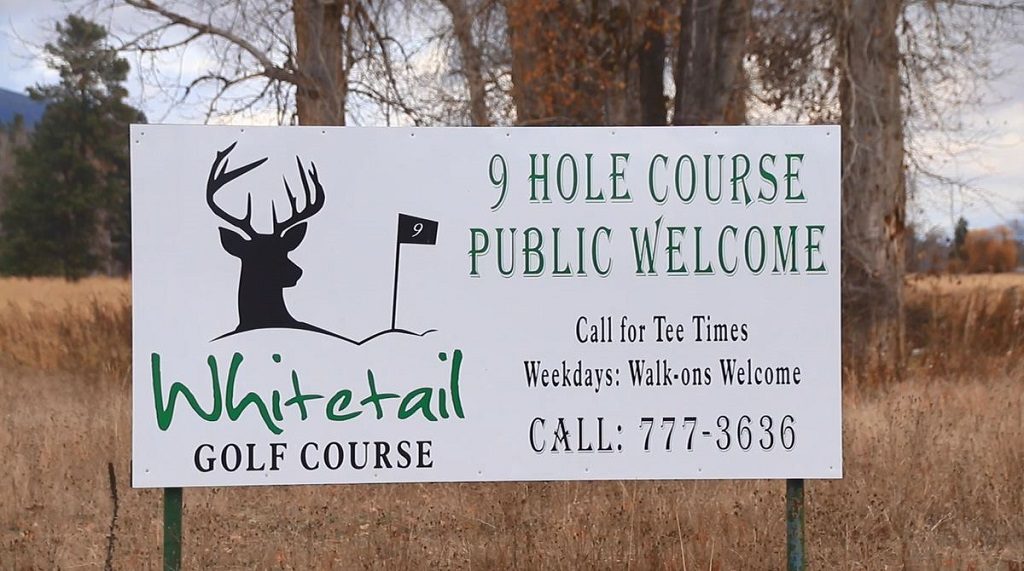STEVENSVILLE – Montana Fish, Wildlife and Parks said the trapping of a young grizzly in the Bitterroot may be “uncommon” but it serves as a good reminder to carry bear spray no matter where you are in the Montana outdoors.
The “sub-adult” male grizzly — kind of like a teenager — was caught over the weekend after Whitetail Golf Course operators of the Whitetail Golf Course requested a trap after finding evidence of a bear causing damage last week.
FWP expected to catch a black bear with the trap, given that grizzlies are often considered uncommon in the Bitterroot, but when the trap was sprung over the weekend, they got a surprise.

“He got relocated. Yeah, he’s in the time of his life where young males bears will disperse kind of, get out and explore,” FWP spokeswoman Vivaca Crowser said. “So that’s what he was doing. And he hadn’t gotten into any trouble before so he was just relocated.”
The trapping has gotten a lot of reaction on social media the past couple of days, especially since the golf course is in the center of the valley, just north of Stevensville at the Lee Metcalf Wildlife Refuge.

FWP said it’s not unheard of for young bears to wander in search of food this time of the year, and there’s plenty of that to be had.
Even old bears, like the famous “Ethyl”, who wandered for thousands of miles including down the middle of Highway 93 in Lolo at night, can include the Bitterroot on their itinerary.
“Bears wander and we’ve got an established population of grizzlies bears from Missoula north to Glacier National Park. So to have one travel through the Bitterroot is not to be unexpected,” Crowser said. “It’s just not something we see commonly. We have had confirmed grizzly bears in the Bitterroot before. We’ve had them come over from Rock Creek over the Sapphire Range.”
“We had one a few years back in the Lolo Creek drainage and then of course south from the Big Hole Valley from time-to-time,” Crowser concluded.
While a grizzly sighting is uncommon in the Bitterroot, FWP said it still shows we should always take precautions for safety.
“We’ve got black bears as you know all around us. So having bear spray with us knowing that there’s black bears out is really good advice,” Crowser said. “Just being prepared for anything really, especially since we know we’ve got black bears, we’ve got mountain lions, all of that all around us.”
FWP wants to remind people to be especially careful with bear attractants this time of the year, cleaning up fallen fruit, and keeping garbage and chicken feed secure.
Click here to learn how to “Be Bear Aware.”
-Reported by Dennis Bragg/MTN News
(October 29, 2018) Montana Fish, Wildlife & Parks (FWP) captured a young male grizzly bear on Saturday, October 27, on the Whitetail golf course north of Stevensville along the Bitterroot River.
Over the past few weeks, FWP received reports of a bear extensively digging and causing damage to the golf course. Because the bear was staying in the area and damaging the property, wardens set a trap in response, expecting to capture a black bear.
FWP trapped the bear early Saturday morning and later confirmed it was instead a young 249-pound male grizzly. The grizzly was relocated Sunday to the lower Blackfoot Valley, on the southern edge of the NCDE, in a spot previously identified as a good relocation area for bears.
FWP said in a press release that through the years, several grizzly bears have been confirmed in the Sapphire Mountains and in the northwest portion of the Bitterroot Valley, including the Lolo Creek drainage, and as far south as the Big Hole Valley. Grizzly bears in the Bitterroot remain relatively uncommon, compared to other parts of northwest Montana, but there have been increasing reports in recent years.
Northwest Montana’s nearby Northern Continental Divide Ecosystem (NCDE) is the closest grizzly bear recovery zone with an established population of grizzlies. “The NCDE is not far away, and grizzly bears are expanding in several directions from there, slowly recolonizing historic ranges,” said FWP Region 2 Bear Management Specialist James Jonkel.
This time of year, Jonkel added, it is common for bears to routinely follow drainages down into the rich valley bottoms, where food and water are more plentiful. “Where the bear was captured along the river, foods like rosehip, snowberry and various forbs are attracting bears right now. Therefore, it’s extra important to contain things that are under our control, like garbage and fruit trees, so that bears keep on moving to their natural foods and aren’t tempted to stay in our neighborhoods.”

